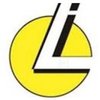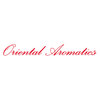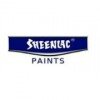Filter interviews by
Eternis Fine Chemicals QC Officer Interview Questions and Answers
Eternis Fine Chemicals QC Officer Interview Experiences
1 interview found
I applied via Naukri.com and was interviewed in Apr 2021. There were 5 interview rounds.
Interview Questionnaire
1 Question
- Q1. Basic chemistry, what do you work if experience and titration and new activities.
Interview Preparation Tips
Top trending discussions






Interview questions from similar companies

This is chemistry based test for the QC Chemist and their questions moderate level.
(3 Questions)
- Q1. What is resolution?
- Ans.
Resolution refers to the ability of a system to distinguish between two closely spaced objects or points.
Resolution is a measure of the clarity or sharpness of an image produced by a camera or display.
It is often expressed in terms of pixels for digital images or lines per millimeter for optical devices.
Higher resolution results in more detailed and clearer images.
For example, a camera with a resolution of 12 megapixel...
- Q2. What type of standard used in AAS?
- Ans.
The standard used in AAS is the atomic absorption standard.
Atomic absorption standard is used to calibrate and validate the accuracy of AAS instruments.
It helps in determining the concentration of elements in a sample by measuring the absorption of light at specific wavelengths.
Common examples of atomic absorption standards include solutions of known concentrations of elements like copper, lead, and zinc.
- Q3. What is the principal of HPLC?
- Ans.
HPLC stands for High Performance Liquid Chromatography, a technique used to separate, identify, and quantify components in a mixture.
HPLC involves a stationary phase (usually a column packed with particles) and a mobile phase (liquid solvent).
The sample mixture is injected into the HPLC system and carried by the mobile phase through the column.
Different components in the sample interact differently with the stationary ...
(2 Questions)
- Q1. Family background?
- Ans.
I come from a close-knit family that values education and integrity, which has shaped my career aspirations and work ethic.
My parents are both educators, instilling a love for learning in me from a young age.
I have two siblings; we often collaborate on projects, fostering teamwork and communication skills.
Family gatherings emphasize open discussions, which has helped me develop strong interpersonal skills.
- Q2. Why we are hiring to you?

I applied via Recruitment Consultant and was interviewed in Oct 2018. There were 3 interview rounds.
Interview Questionnaire
2 Questions
- Q1. Trouble shooting about GC and HPLC
- Ans.
GC and HPLC troubleshooting involves identifying and resolving issues with the instruments and their components.
Check for leaks in the system
Verify proper calibration of detectors
Inspect and clean columns
Ensure proper sample preparation
Check for proper flow rates and pressures
Verify proper functioning of pumps and valves
- Q2. Hr dept only discusses about salary package
Interview Preparation Tips
Skills: Communication, Body Language, Problem Solving, Analytical Skills, Presentation Skills, Time Management, Decision Making Skills
Duration: 1-4 weeks

Production Officer Interview Questions & Answers
Anupam Rasayan Indiaposted on 14 Oct 2023
I applied via Recruitment Consulltant and was interviewed in Sep 2023. There were 3 interview rounds.

(1 Question)
- Q1. Technical Questions like as CV mentioned topic releted questions and MSDS Solvent and Chemical , Instrument , PIT, LIT and Operating valves and Vaccum system Safety questions LEL , UEL range CV mentioned...
(1 Question)
- Q1. Salery discussion
Interview Preparation Tips

Production Officer Interview Questions & Answers
National Organic Chemical Industriesposted on 31 Oct 2024
I applied via Referral and was interviewed before Oct 2023. There was 1 interview round.
(2 Questions)
- Q1. What are difference between flash point and fire point???
- Ans.
Flash point is the temperature at which a substance gives off enough vapor to ignite momentarily, while fire point is the temperature at which a substance will continue to burn after ignition.
Flash point is the temperature at which a substance can ignite momentarily when exposed to an ignition source.
Fire point is the temperature at which a substance will continue to burn after ignition.
Flash point is typically lower t...
- Q2. What is centrifugal pump mechanism???
- Ans.
Centrifugal pump mechanism involves the conversion of mechanical energy into kinetic energy to increase the fluid's velocity and pressure.
Centrifugal pump consists of an impeller that rotates to create centrifugal force.
Fluid enters the pump through the center of the impeller and is flung outwards by centrifugal force.
The fluid gains kinetic energy and pressure as it moves through the pump.
The fluid is then discharged ...

Production Officer Interview Questions & Answers
Cohizon Life Sciences Limitedposted on 2 Oct 2024
I applied via Walk-in and was interviewed before Oct 2023. There was 1 interview round.
(3 Questions)
- Q1. Family background
- Q2. Mother father details
- Q3. Education details
Interview Preparation Tips

(2 Questions)
- Q1. As per experience and Study related all Questions.
- Q2. Nothing else all regular basis of questions.
Interview Preparation Tips

Production Officer Interview Questions & Answers
Oriental Aromaticsposted on 18 Jun 2024
I applied via Referral and was interviewed before Jun 2023. There was 1 interview round.
(2 Questions)
- Q1. How to create vacuum in column
- Ans.
Vacuum in a column can be created by using a vacuum pump to remove air and other gases from the column.
Use a vacuum pump to remove air and other gases from the column
Ensure all connections are airtight to maintain the vacuum
Monitor the vacuum level regularly to ensure it is maintained
Adjust the vacuum pump settings as needed to achieve the desired vacuum level
- Q2. How steam ejector work
- Ans.
Steam ejectors work by using high-pressure steam to create a vacuum for removing gases or vapors from a system.
Steam is expanded through a nozzle to increase its velocity
The high-velocity steam entrains the gases or vapors to be removed
The mixture of steam and gases is then condensed and separated in a diffuser
The condensed steam is usually discharged to a condenser or a drain
Interview Preparation Tips

Production Officer Interview Questions & Answers
National Organic Chemical Industriesposted on 12 Apr 2024
I applied via Referral and was interviewed before Apr 2023. There was 1 interview round.
(1 Question)
- Q1. What is lel & uel of hydrogen?
- Ans.
LEL (Lower Explosive Limit) and UEL (Upper Explosive Limit) are the concentration range of a gas in air that can result in an explosion if ignited.
LEL of hydrogen is 4% in air
UEL of hydrogen is 75% in air
Concentrations below LEL are too lean to burn, while concentrations above UEL are too rich to burn
Interview Preparation Tips

I applied via Walk-in and was interviewed in May 2024. There was 1 interview round.
(2 Questions)
- Q1. Type of reactor
- Ans.
There are various types of reactors used in production processes, such as batch reactors, continuous stirred-tank reactors, and plug flow reactors.
Batch reactors are used for small-scale production and allow for easy control of reaction conditions.
Continuous stirred-tank reactors are used for continuous production and have good mixing capabilities.
Plug flow reactors are used for reactions that require a specific reside...
- Q2. Types of distillation column
- Ans.
Types of distillation columns include batch, continuous, fractional, and steam distillation.
Batch distillation: Used for small-scale production and involves separating components based on boiling points.
Continuous distillation: Used for large-scale production and involves a continuous feed of mixture and product removal.
Fractional distillation: Used to separate components with closer boiling points by creating multiple...
Tell us how to improve this page.
Eternis Fine Chemicals Interviews By Designations
- Eternis Fine Chemicals Production Officer Interview Questions
- Eternis Fine Chemicals QC Officer Interview Questions
- Eternis Fine Chemicals Project Supervisor Interview Questions
- Eternis Fine Chemicals Senior Project Executive Interview Questions
- Eternis Fine Chemicals Senior Executive - EHS Interview Questions
- Eternis Fine Chemicals Processing Executive Interview Questions
- Eternis Fine Chemicals Production Associate Interview Questions
- Eternis Fine Chemicals Instrumentation Officer Interview Questions
- Show more
Interview Questions from Similar Companies
Eternis Fine Chemicals QC Officer Reviews and Ratings
based on 4 reviews
Rating in categories
|
Production Officer
129
salaries
| ₹3 L/yr - ₹7 L/yr |
|
Production Associate
34
salaries
| ₹1 L/yr - ₹4.8 L/yr |
|
Officer
31
salaries
| ₹2.5 L/yr - ₹6.7 L/yr |
|
Assistant Manager
26
salaries
| ₹8.5 L/yr - ₹18.5 L/yr |
|
Process Engineer
20
salaries
| ₹4.5 L/yr - ₹8.5 L/yr |

Sheenlac Paints

Deepak Fertilisers and Petrochemicals

Laxmi Organic Industries

Meghmani Organics
- Home >
- Interviews >
- Eternis Fine Chemicals Interview Questions











